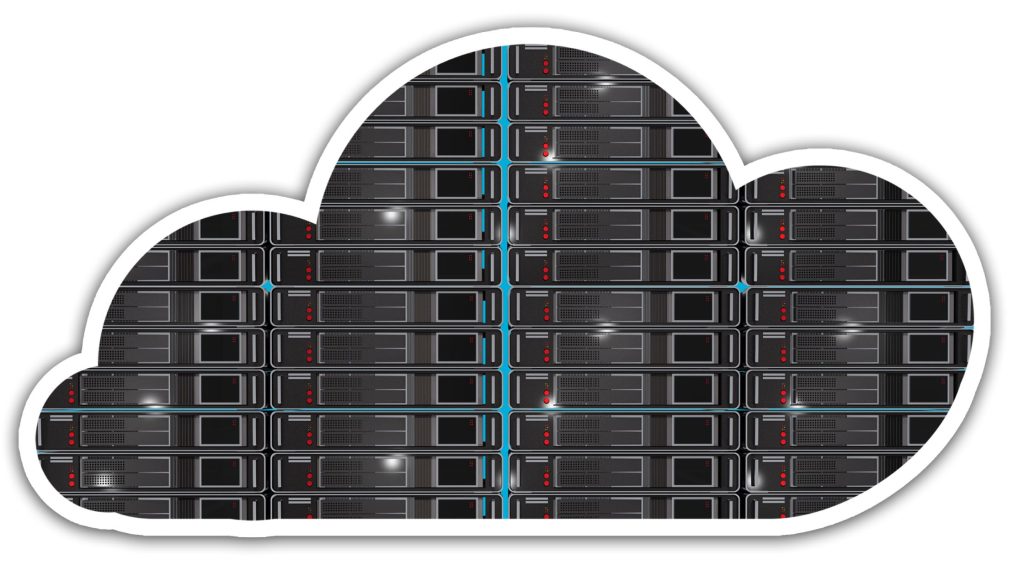Cloud server? Sounds like a buzzword, right? But they’re more than just a trend in the tech world. Picture this: a place where your website, applications, and data can stretch, grow, and remain safe, without burning a hole in your pocket. That’s what a cloud server does for you.
In this comprehensive guide, we will look into what a cloud server is, covering, how it works, its benefits, use cases, and much more.
What Is a Cloud Server?
A cloud server is a virtual server that operates within a cloud computing environment. Unlike traditional physical servers, cloud servers are hosted on a network of interconnected virtual machines. This virtualization enables the rapid provisioning of computing resources, including processing power, memory, and storage, making them highly adaptable and scalable.
How does a Cloud Server Work?
Cloud servers function within the dynamic realm of cloud computing. This technology allows users to access on-demand computing resources over the internet. The hallmark of cloud computing is its flexibility, which aligns with the ever-changing needs of businesses and individuals. Cloud servers, as an integral part of this ecosystem, offer numerous advantages that set them apart from traditional server solutions.
The Advantages of Cloud Servers
1. Scalability: Meeting Your Growing Needs
One of the most compelling advantages of cloud servers is their scalability. This feature empowers users to effortlessly adjust their server resources to match changing workloads and traffic patterns. As demands increase or decrease, there’s no need for extensive hardware investments or upgrades.
2. Reliability: Minimizing Downtime
Cloud servers are synonymous with reliability. Hosted in data centers equipped with redundant systems, they boast exceptional uptime. Many service providers even offer Service Level Agreements (SLAs) that guarantee a specific level of service availability.
3. Cost-Efficiency: Budget-Friendly Solutions
Cloud servers excel in terms of cost-efficiency. Users only pay for the computing resources they consume, eliminating the expenses associated with purchasing and maintaining physical servers. This cost-effectiveness caters to a wide range of users, from small businesses to large enterprises.
4. Redundancy and High Availability: Uninterrupted Services
Redundancy is a key feature of cloud servers. It’s achieved through data replication and load balancing, which ensure the availability of resources even if one server fails. This redundancy translates into high availability, minimizing service interruptions and enhancing overall performance.

Exploring Use Cases for Cloud Servers
Website Hosting
Cloud servers are a top choice for website hosting due to their ability to efficiently manage web traffic. The dynamic scaling of resources ensures that websites can handle fluctuations in visitor numbers without missing a beat.
Application Deployment
For application deployment, cloud servers provide unmatched flexibility. Users can tailor server configurations to precisely match the resource requirements of their applications. This customization extends to adjusting resource allocation as applications evolve.
Data Storage and Backup
Cloud servers are a go-to solution for data storage and backup needs. They offer secure storage options and robust backup strategies to protect against data loss. Users can rest assured that their critical information is safe and readily accessible.
Development and Testing Environments
The agility of cloud servers shines in development and testing environments. Users can swiftly provision virtual servers for testing new applications or features, then scale them down when testing is complete. This flexibility accelerates development cycles and reduces time-to-market.
Distinguishing Types of Cloud Servers
Public Cloud Servers: Accessibility and Affordability
Public cloud servers, offered by third-party providers like Amazon Web Services (AWS) and Microsoft Azure, are accessible to the public. They provide cost-effective, on-demand computing resources and are suitable for a wide range of users.
Private Cloud Servers: Control and Security
Private cloud servers operate within an organization’s data center or a dedicated cloud provider. They offer enhanced control and security, making them ideal for businesses with stringent compliance requirements or specific security needs.
Hybrid Cloud Servers: The Best of Both Worlds
Hybrid cloud servers combine elements of public and private clouds. They allow data and applications to be shared between them while maintaining the unique advantages of each type. Hybrid clouds are often used by businesses requiring data segmentation.
Leading Cloud Server Providers
1. Amazon Web Services (AWS): A Global Leader
AWS is one of the largest and most prominent cloud service providers. It offers a comprehensive suite of services, including Elastic Compute Cloud (EC2) for cloud server instances. AWS’s global presence and extensive resources make it a preferred choice for many businesses.
2. OnWorks Free Cloud Servers
OnWorks is the best platform for users who want to use free cloud servers for limited usage. It offers users access to a variety of Ubuntu, Mageia, UberStudent, and more servers that they can use for free.
3. Microsoft Azure: A Comprehensive Ecosystem
Microsoft Azure is recognized for its comprehensive ecosystem of cloud services. Azure Virtual Machines facilitate the deployment and management of cloud servers, making it a popular choice for users already invested in Microsoft technologies.
3. Google Cloud Platform (GCP): High Performance
Google Cloud Platform (GCP) provides high-performance cloud server solutions through Google Compute Engine. GCP is known for its global network infrastructure and powerful computing resources.
4. IBM Cloud: Enterprise-Grade Capabilities
IBM Cloud is trusted for its enterprise-grade capabilities. It offers a range of cloud server solutions that emphasize reliability and scalability, making it an attractive option for businesses with complex computing needs.
5. Alibaba Cloud: A Global Player
Alibaba Cloud is a global cloud provider, especially dominant in the Asia-Pacific region. It offers cloud server services tailored to meet the demands of a diverse user base.

Mastering Best Practices for Cloud Server Management
Resource Monitoring: The Key to Optimization
To ensure optimal cloud server operation, regular resource monitoring is essential. It helps users understand resource usage patterns and enables them to scale resources to match actual needs effectively.
Security Measures: Protecting Your Assets
Implementing robust security measures is paramount for protecting cloud servers and the data they store and process. Firewalls, encryption, and access controls are essential components of a comprehensive security strategy.
Regular Backups: Ensuring Data Integrity
Data integrity is a top priority. Implementing a backup strategy that includes regular backups of critical information guards against data loss due to accidental deletions, hardware failures, or other unforeseen events.
Cost Optimization: A Prudent Approach
Managing costs is crucial for maintaining budget efficiency. Regularly review resource allocation and usage to identify opportunities for cost optimization. Cloud service providers often offer cost-saving options that users should explore.
Conclusion
The world of cloud servers is dynamic, and their benefits are substantial. Whether you’re a business seeking scalability, reliability, and cost-efficiency or an individual looking to harness the power of cloud technology, cloud servers offer solutions that cater to a wide range of needs.
By understanding cloud servers, their advantages, use cases, types, and best practices, you can empower yourself with the knowledge to unlock their full potential. The journey into the cloud server realm is an exciting one, and it promises a future marked by innovation, growth, and success in our ever-evolving digital landscape.

